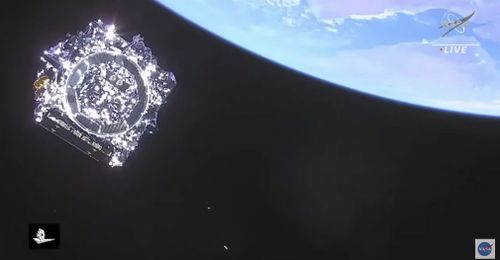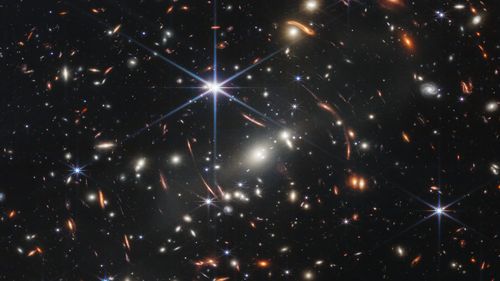The James Webb Space Telescope has observed its smallest cosmic object to date — a previously unknown asteroid about the size of the Colosseum in Rome.
A team of European astronomers made the detection of the space rock, which is between 100 to 200 metres long, and located in the main asteroid belt between Mars and Jupiter.
The doughnut-shaped belt is home to most of the asteroids in the solar system.
READ MORE: Survivors ‘screaming’ under rubble as Turkey quake kills thousands
The main asteroid belt is in close alignment with the ecliptic plane or the same plane that includes Earth’s orbit around the sun.
The asteroid may be one of the smallest ever found in the main belt.
Such small, dark cosmic objects are incredibly hard to observe, but astronomers can use Webb to look for more asteroids of this size in the future.
Further observations will help astronomers learn more about the asteroid in the future and confirm that it is truly a newly discovered object.
READ MORE: Ninth consecutive interest rate hike looms for mortgage holders

The detection of the asteroid was made by chance when the Webb research team focused the telescope’s Mid-InfraRed Instrument, or MIRI, on the main belt asteroid (10920) 1998 BC1, originally discovered in 1998, to take calibration images.
“We — completely unexpectedly — detected a small asteroid in publicly available MIRI calibration observations,” Thomas Müller, an astronomer at the Max Planck Institute for Extraterrestrial Physics in Germany, said in a statement.
“The measurements are some of the first MIRI measurements targeting the ecliptic plane and our work suggests that many new objects will be detected with this instrument.”
READ MORE: Family shocked to find snake on ‘bread rolls’

Asteroids are the leftover remnants from the formation of the solar system, and astronomers have determined the location of more than 1.1 million of them.
Many asteroids still remain unknown — and Webb’s find hints that the powerful infrared telescope may uncover plenty more small, rocky objects that have otherwise escaped detection before.
A ‘failed’ observation’s silver lining
The calibration images the Webb research team took in their attempt to observe asteroid (10920) 1998 BC1 didn’t turn out as expected and were considered a technical failure because the object appeared so bright.
The astronomers were still able to use the data to test a new technique for determining an asteroid’s orbit and size.
The observations of (10920) 1998 BC1 were combined with data from the European Space Agency’s Gaia mission and ground-based telescopes.
While analysing the data, the researchers spotted an “interloper” in their observations — the new asteroid making its first appearance.
READ MORE: Woman charged with murder after toddler’s body found
“Our results show that even ‘failed’ Webb observations can be scientifically useful, if you have the right mindset and a little bit of luck,” Müller said.
“Our detection lies in the main asteroid belt, but Webb’s incredible sensitivity made it possible to see this roughly 100-metre object at a distance of more than 100 million kilometres.”
And astronomers won’t be surprised if other unknown space rocks photobomb future Webb images.
“This is a fantastic result which highlights the capabilities of MIRI to serendipitously detect a previously undetectable size of asteroid in the main belt,” Bryan Holler, Webb support scientist at the Space Telescope Science Institute in Baltimore, said in a statement.
“Repeats of these observations are in the process of being scheduled, and we are fully expecting new asteroid interlopers in those images!”
